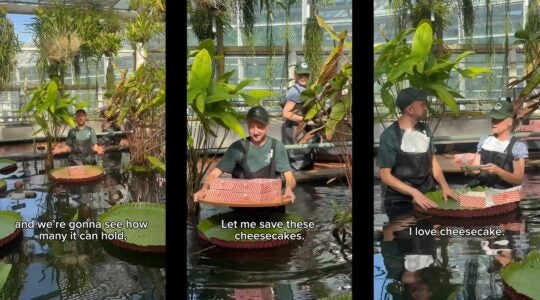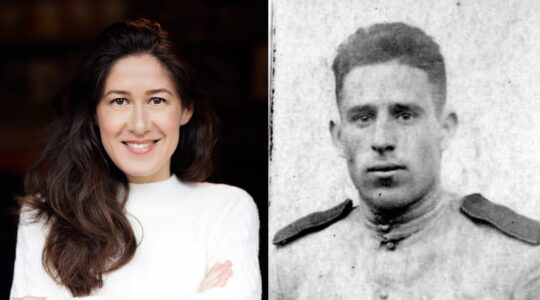Note: This is the first of three stories on eastern Canada. Pieces on Prince Edward Island and Montreal will follow in subsequent weeks.
Of all the wild, strange places in Canada, Newfoundland stands out for an oddity unique in North America: its own separate time zone, a half-hour ahead of everyone else.
Then there is its landscape — a sprawling, mountainous island of brightly painted wooden villages and windswept cliffs, plunging fjords and sandy beaches, surrounded by a cool, steel-gray sea where icebergs float by. Anyone who has been to Scotland, Norway or New Zealand will find the scenery familiar. But Newfoundland’s rugged New World culture sets it apart — as does the sheer vastness of its territory.
September and October are an ideal time to prowl these remote highlands, with the Gulf Stream lending warmth to autumn afternoons. Warmth in Canada is relative, of course, and squalls can hit with shocking intensity, while nights can be nippy by August. Still, the spell just before winter sets in is a popular time to hike, bird watch, and bicycle this North Atlantic wilderness.
It is also the time when Newfoundland Jews gather to welcome the New Year at one of the easternmost congregations in the New World — Beth El Synagogue, an egalitarian Conservative shul in the provincial capital of St. John’s. Just before Rosh HaShanah, congregants gather for Shacharit prayers at Cape Spear, the farthest-east point in North America; after the sounding of the shofar, they head to a nearby Jewish cemetery for a special memorial service.
The Jewish pioneers of this remote territory were probably English traders, according to lore, but the community coalesced about a century ago. Though never larger than a few hundred families, it remains tight knit and active. In 2006, a group of Jews established the Jewish Community Havura of Newfoundland and Labrador in St. John’s, providing an alternative, inclusive worship space and support for Jewish students at nearby Memorial University.
Jews are, of course, but a fraction of those who call Newfoundland home. With nearly a half-million residents, the island is the population center of this eastern-most province, officialy called Newfoundland and Labrador. Culturally, it is a maritime mash-up of the various seafaring peoples that have fished its craggy shores: Vikings, indigenous tribes, French, Iberians, Britons, Scots and Irish.
Most came by sea, as do many modern-day travelers. Ferries are convenient if you’re already in Canada; if not, fly into St. John’s, an unexpectedly lovely city that many compare to San Francisco. The similarities are obvious: brightly painted Victorian-era houses perched picturesquely on narrow streets, with hills sloping down to a bustling harbor.
St. John’s is actually one of North America’s oldest English settlements. For a magnificent view over the hills and harbor — and a glimpse of colonial Canada — most head up to Signal Hill, where Marconi received the first transatlantic radio signal over a century ago. A small museum commemorates the event alongside a 250-year-old fort and moldering canons — reminders of bygone wars.
For most of its history, though, Newfoundland life has centered less around geopolitics than cod, salmon and shrimp. The fishing industry declined in recent decades, but an oil-and-gas boom has taken its place, fueling a thriving modern economy.
This new prosperity explains the city’s shiny modern sheen: its green Victorian-era parks are tidy and well kept, its downtown shops and pubs humming with activity. With only around 100,000 residents and a deliberately low-scale architecture, St. John’s feels like a small British city, relaxed and easy to enjoy.
From there, many enjoy exploring the Avalon Peninsula, dotted with seaside villages. (It goes without saying that a car is essential here.) Brigus is an especially popular stop for its pretty harbor, lush green lawns and stonewalls that give it the feel of an English country town. But there are countless stops with low-key quaintness and fiddle music wafting from the pubs.
Most visitors to Newfoundland also want to visit Gros Morne National Park, a UNESCO World Heritage Site that lies on the opposite (west) side of the island from St. John’s. It takes all day to drive across the island — even without stopping — and much more time than that to get a sense of all that Gros Morne offers within its 700 square miles on the Gulf of St. Lawrence.
The park boasts some of the most breathtaking vistas in the New World: fjords and mountains, towering waterfalls, miles of remote tundra and pristine shoreline. Sandy beaches line bays and inlets where bright-blue icebergs (and sometimes whales) bob just offshore. I was told that prime iceberg season is late spring, but the weather here is unpredictable enough that ice is possible during much of the year.
It takes an outdoorsy spirit, a rugged windbreaker, a good gas budget and plenty of time to do justice to this part of the world. But considering the exotic payoff — fjords and icebergs, just a couple of hours east of New York — it may be one of Canada’s better-kept secrets.
The New York Jewish Week brings you the stories behind the headlines, keeping you connected to Jewish life in New York. Help sustain the reporting you trust by donating today.




